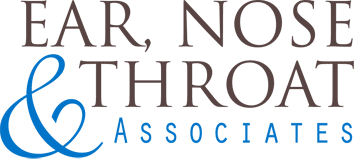Chronic Sinusltis: One of America’s Most Common Health Conditions
31 million people are afflicted with chronic sinusitis each year, making it one of the most common health conditions in the United States.
The sinuses are air-filled cavities located within the bones around the nose and eyes that allow for natural ventilation and drainage. In Chronic Sinusitis the sinus linings become inflamed, blocking the natural drainage passageways and leading to chronic infections and nasal obstruction.
Patients with chronic sinusitis often suffer from debilitating symptoms such asfacial pain or pressure, nasal congestion and difficulty breathing, discolored nasal discharge, loss of smell and taste, headache, fatigue and depression.
A Need to Improve Treatment Outcomes
Chronic sinusitis often requires a complex combination of surgical and medical treatments. When sinusitis does not respond to medications, surgery to enlarge the openings that drain the sinuses may be an option.
Each year, 500,000 patients undergo ethmoid sinus surgery to treat the condition. Although sinus surgery is effective, the majority of patients experience recurrent symptoms within the first year; as many as 25 percent then undergo revision surgery due to recurrent obstruction of the sinus cavity.
Chronic Sinusitis Patients Have A New Weapon- PROPEL
The goal of surgical treatment for chronic sinusitis is to enlarge the inflamed or obstructed sinus
passageways. Post-surgery check-ups are required toinspect the sinus cavities to monitor for inflammation and scarring and treat accordingly with surgery and/or oral steroids.
The dissolvable PROPEL Steroid Releasing Implant is the first in a new category of products offering
localized, controlled delivery of steroid directly to the sinus tissue to maintain the openings created in surgery.
Applying principles of coronary drug-eluting stents to sinusitis sufferers, the spring-like implants gradually deliver an advanced steroid with anti -inflammatory properties (mometasone furoate) directly to the sinus lining, then dissolve into the body following endoscopic sinus surgery. The result is improved surgical outcomes, reducing the need for additional surgical procedures and for systemic steroids, which can have serious side effects.
Three rigorous clinical trials have demonstrated that the implant is safe and maintains the results of sinus surgery by propping open the sinus cavities and decreasing post-operative scarring and inflammation. Reducing these factors is proven to improve long-term outcomes and to reduce the need for repeat surgery and oral steroids, which can have serious side effects. PROPEL is the only product used in sinus surgery to be supported by level 1-A evidence.
National Health Interview Sunrey 2006. CDC National Center for Health Statistics. Series 10 Number 235
Rosenfeld at aI,. Oto-HNS. 2007; 137:S1-S31.
Schaitkin BM, May M, Shapiro A: et aI.. Laryngoscope. 1993; 103: 111-20.
Pilot study results:Murr AH, Smith TL, Hwang PH, at al. IFAR. 2011;1:2332.,’ ADVANCE ll clinical trial: Marple BF, Smith TL, Han JK et
al. Otolaryngol Head Neck Surg2012; 146(6) 1004-1011.; Meta-analysis: Han JK, Marple BF, Smith Tl. et el lFAR.2012; 2 :271-279.
Kennedy DW, Wright ED, Goldberg AN. Laryngoscope. 2000;1 10:29.31.
The PROPEL Sinus Implant is intended for use following ethmoid sinus surgery to maintain patency. For more information consult your physician or visit www.intersectENT.com to view information including indications, contraindications, warnings, precautions and adverse
events. Caution: Federal law (USA) resticts this product to sale by or on the order of a physician.
2013© Intersect ENT Inc. All rights reserved. INTERSECT ENT™ and PROPEL™ are registered trademarks of Intersect ENT, Inc.
Intersect ENT | 1555 Adams Drive | Menlo Park, CA 94025 | 650.641.2100
